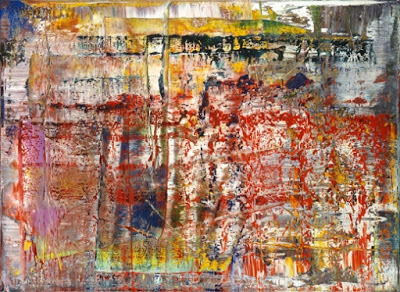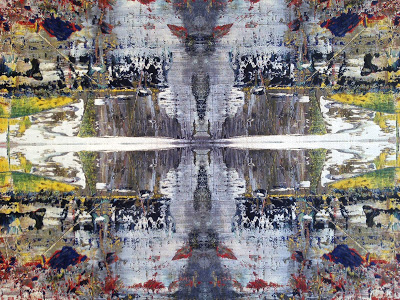For the first time in almost ever, I took a couple of months off from writing….anything. I was tired of having ideas, tired of the urgency to express them, wanted to concentrate on making art, not thinking about it. Well I found it didn’t pay—just like avoiding the gym doesn’t pay—because now what I’m left with is mental flab and a limp writing muscle. A paragraph that just a few months ago would take five minutes to write, now takes an entire morning—with myriad breaks for coffee and food. Therefore, like not exercising, not writing can be fattening—especially in England, where I am until tomorrow, and where everything goes better with double cream.
Also I hadn’t seen any art that knocked my socks off. The Paul McCarthy show at the Armory put me in such a bad mood, and even the Turrell installation at the Guggenheim, which I wanted to like in the worst way (more about that in another post), left me cold. I fled to Paris, anticipating “Dynamo,” an exhibition of sound and motion at the Grand Palais, but it was the white cheese and passion fruit dessert in the museum café that really turned me on. Sometimes I think I’ve chosen the wrong field.
However if anyone can pull me out of a torpor, it’s Gerhard Richter. Usually there’s a lot on in the London summer season, but this year the only thing I really wanted to see was the exhibition(up through July 27) at Gagosian on Davies Street of four Richter tapestries from 2009—which, as it turned out, could be his most magnificent work ever.
The tapestries are based on a single scraped painting: Abstract Painting (724-4) (1990). This is the same one he mined for his book, Patterns: Divided, Mirrored, Repeated(2012), from which he generated the the large-scale digital Strip Paintings, shown at Marian Goodmanlast season, which I reviewed for Art in America.
Gerhard Richer, Abstract Painting (724-4) (1990)
Woven on a mechanical jacquard loom, each tapestry represents a Rohrschach-like four-time multiplication of one quadrant of the original image. Dense and rich, they appear at once medieval and futuristic, tribal and Baroque, with varying texture, thick and thin, and colors that range from murky to brilliantly clear.
While my friend and I stood riveted for at least 20 minutes, a couple with a car and driver waiting outside, entered the otherwise empty storefront gallery, walked up to one tapestry, said “Wow!” and walked out.
Although photos cannot possible replicate the experience, here are some attempts (oddly, my iPhone photos have more vibrant color than the official ones):
Gerhard Richter, Tapestries, 2009 (Installation view)
Gerhard Richter, Tapestries, 2009 (Installation view)
Gerhard Richter, Tapestries (Detail)
Gerhard Richter, Tapestries, 2009 (Installation view)
Gerhard Richter, Tapestries, 2009 (Installation view)
Gerhard Richter, Tapestries (Detail)


Comments
Thank you - wish I could see them in person. I'...
I agree with Taylor, These tapestries are scrumpti...
I agree with Taylor, These tapestries are scrumpti...
Does anyone know where these textiles were produce...
pthornto@gmail.com
You can ask Gagosian London for details--and then ...
Add new comment